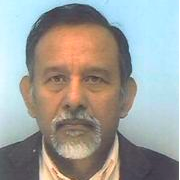Electron Scattering in Intense Laser Fields
A special issue of Atoms (ISSN 2218-2004).
Deadline for manuscript submissions: closed (31 January 2019) | Viewed by 11021
Special Issue Editor
Special Issue Information
Dear Colleagues,
Electron scattering from ions, atoms and molecules in the presence of intense laser fields involve such processes as stimulated Bremsstrahlung and inverse-Bremsstrahlung, with emission and absorption of one or many photons, along with elastic, inelastic, as well as off-shell transitions in the target systems, which can be either assisted or induced (or both) by the laser field. Besides their intrinsic interest, these processes are of importance in applicational research, such as, modelling the fully, or partially ionised laser-plasmas. Study of electron collisions in the presence of intense fields could be also of astrophysical interest, for example, in connection with radiative processes that can occur in the vicinity of galactic electromagnetic radiation sources. Another prospect of electron scattering in the presence of a laser field is the imaging of fast electronic motions in atomic and molecular systems. This possibility has arisen as a consequence of the development of ultrashort (including, atto second) laser pulses in the laboratory as well as the generation of coherent electron pulses by ionisation of atoms by the ultra-short laser pulses. This development could complement the traditional electron diffraction methods for determining the static structures by their extension to dynamical imaging by the pump-probe technique, in which the duration of the electron-pulse and the laser-pulse, and the delay between them, can all be varied independently, as well as, the laser-pulse could be employed prior to or subsequently with the electron-pulse. Such techniques could be used, for example, to determine the dynamic variation of the electronic structure in real time of a superposition state in the target system, that could be induced deliberately. This Special Issue of Atoms shall contain original research reports and a set of succinct and up-to-date review articles by the researchers working in the field. They could be either experimental or theoretical, or both, in content. The reviews are envisaged to be of interest not only to the active researchers of the subject but also to the young researches beginning to work in the field, and to more experienced scientists working in a neighbouring, or a different field, but are interested to gain an overview of the subject.
Prof. Dr. Farhad H.M. Faisal
Guest Editor
Manuscript Submission Information
Manuscripts should be submitted online at www.mdpi.com by registering and logging in to this website. Once you are registered, click here to go to the submission form. Manuscripts can be submitted until the deadline. All submissions that pass pre-check are peer-reviewed. Accepted papers will be published continuously in the journal (as soon as accepted) and will be listed together on the special issue website. Research articles, review articles as well as short communications are invited. For planned papers, a title and short abstract (about 100 words) can be sent to the Editorial Office for announcement on this website.
Submitted manuscripts should not have been published previously, nor be under consideration for publication elsewhere (except conference proceedings papers). All manuscripts are thoroughly refereed through a single-blind peer-review process. A guide for authors and other relevant information for submission of manuscripts is available on the Instructions for Authors page. Atoms is an international peer-reviewed open access monthly journal published by MDPI.
Please visit the Instructions for Authors page before submitting a manuscript. The Article Processing Charge (APC) for publication in this open access journal is 1500 CHF (Swiss Francs). Submitted papers should be well formatted and use good English. Authors may use MDPI's English editing service prior to publication or during author revisions.
Keywords
- electrons
- ions
- atoms
- molecules
- scattering
- laser assisted
- laser induced
- elastic
- inelastic
- off-shell
- many photon
- Bremsstrahlung
- inverse-Bremsstrahlung
- laser-plasma
- astrophysical
- ultra-short
- laser-pulse
- coherent
- electron-pulse
- pump-probe
- delay
- imaging





